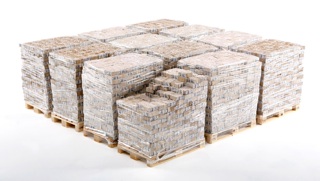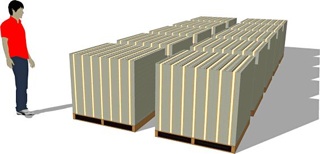Million, billion, trillion
Thursday, 12 March 2009 | 3 Comments
I used to think that I knew what 1 billion was, i.e. 1 000 000 000 000. Then a couple of years ago, I looked on Wikipedia and found there were two defintions: Long and short scales.
It seems that changes in the way Australia defines one billion have only occurred relatively recently (quoting Wikipedia)
As of 1999, the Australian Government’s financial department did not consider short scale to be standard, but used it occasionally. The current recommendation by the Australian Department of Finance and Administration (formerly known as AusInfo), and the legal definition, is the short scale.
According to the Metric Conversion page from the National Measurement Institute:
Common usage in Australia (AS/NZX 1376:1996 Conversion Factors, p31) is that:
- million = 106 (i.e. 1 000 000)
- billion = 109 (i.e. 1 000 000 000)
- trillion = 1012 (i.e. 1 000 000 000 000)
- quadrillion = 1015 (i.e. 1 000 000 000 000 000)
So, it seems that Australia does follow the short scale.
Now that we’ve sorted that out… here are some helpful photos found on the web for understanding large numbers.
This first image is a photo of one billion dollars (US of course).

This second visualization starts with a $100 dollar bill, goes to $10 000, $1 million, $100 million, $1 billion (pictured below) and then $1 trillion.

Click through both photos for a better version.
A couple of notes:
- It’s rather odd that a defintion like the one above is hidden behind a document costing $70: AS/NZS 1376:1996 : Conversion factors.
- It’s also a little odd, that nowhere in the Years 7-10 Mathematics Syllbus are these definitions covered.
Posted in • Lesson Idea • Number • Media • Photo | Short URL: http://mths.co/1431
Post a comment
Commenting is not available in this channel entry.New Subscribe to the …
MathsLinksemail newsletter
Get updates…
About
Simon Job — eleventh year of teaching maths in a public high school in Western Sydney, Australia.
MathsClass is about teaching and learning in a maths classroom. more→
Archive
Elsewhere
 @simonjob
@simonjob
updates via  @mathslinks
@mathslinks
Recently read/found.
Being a Vector is not Mutually Exclusive – Ringo Mok
maths vectorsInstagram
Gcf howie_hua maths
Comments
author